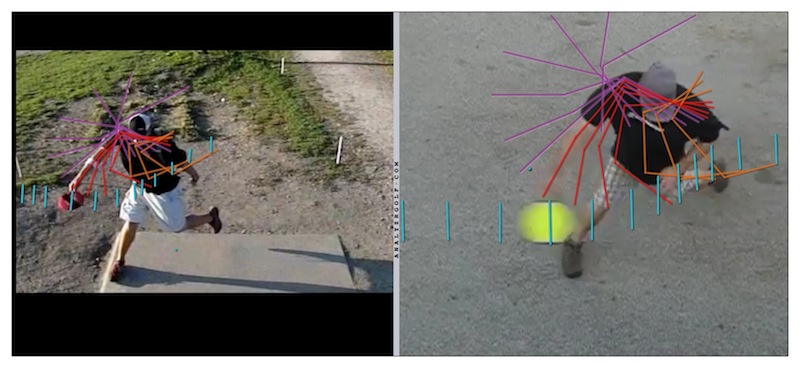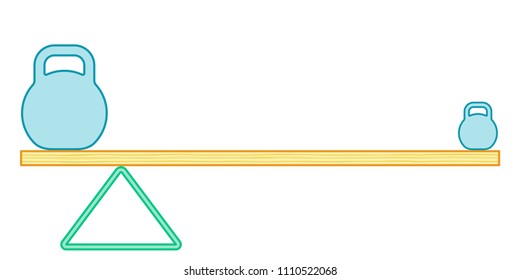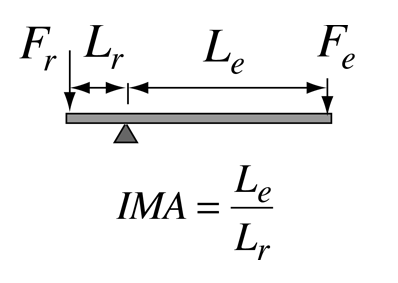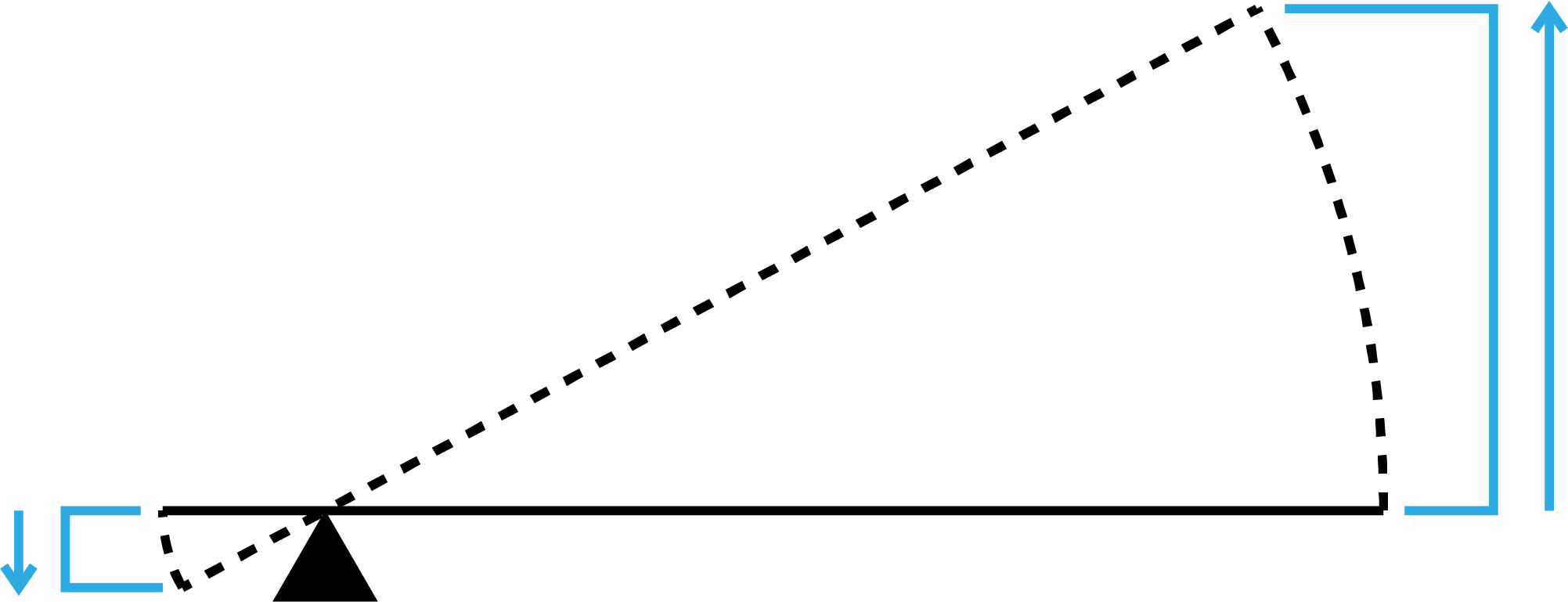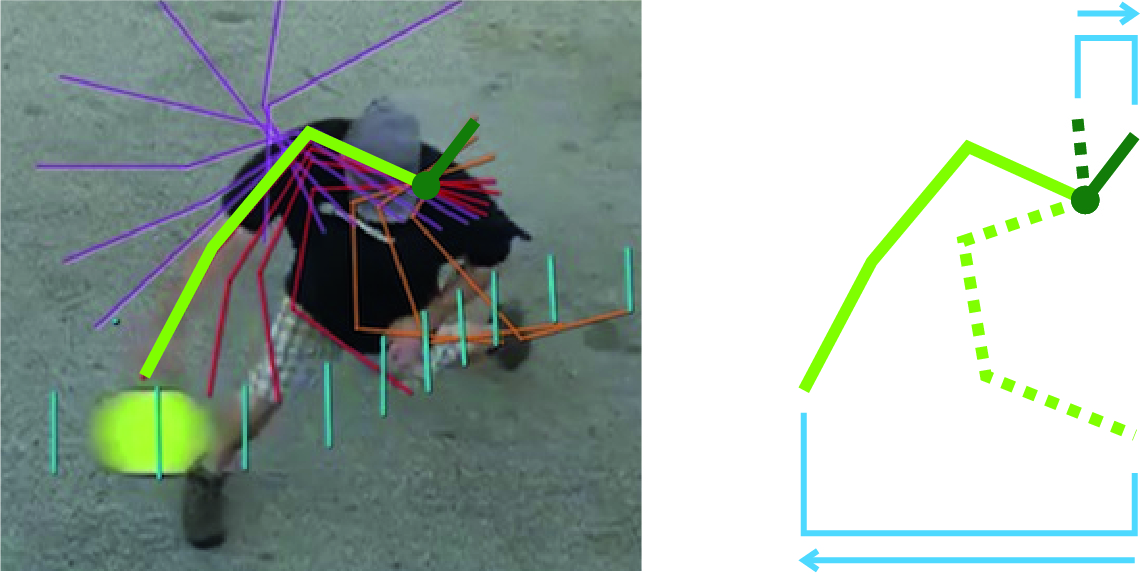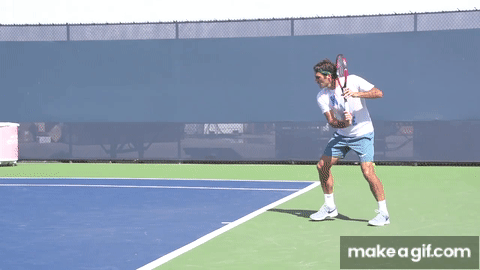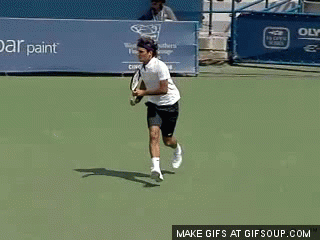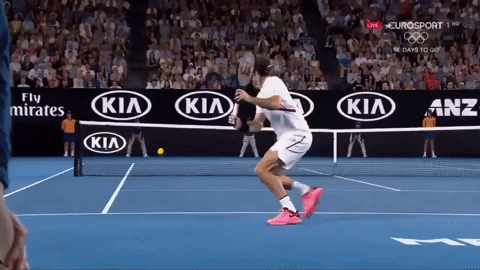Ouch! Poor Tom...
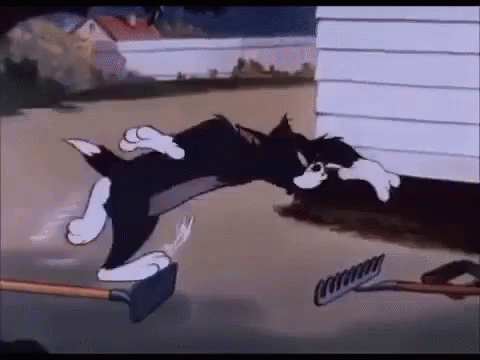
We've all seen this scenario a hundred times over in movies and cartoons. Looks like it would hurt quite a bit, right? That's a lot of force travelling really fast.
Here's another one for all you sadists out there:
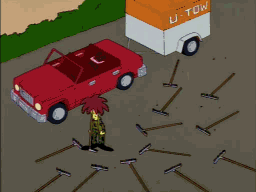
Let's pick this scenario apart.
What's REALLY happening here?
What's starting the movement of the rakes? And why are they moving so fast when nothing else in the scene seems to be moving nearly as fast as the handles of the rakes?
The answer is quite simple - leverage to the smallest possible lever.
And the result is that the longest lever comes smashing up ROTATING around the pivot point
It's just that simple!
Now this is important:
Would you get the same force and speed on the rake by grabbing it on the far side of the handle and trying to pull it up really fast?
Answer: No, not at all.
So why are you doing this when you throw? Your throwing arm is basically the handle (although it consist of moving levers and some 90 degree angles, the concept is basically the same). Don't try to drag the handle around! Instead try to "step on the rake". One small and linear movement just behind your center of gravity and.. BAM! Feel your whole arm come smashing around -rotating- around your center of gravity. As always, keep the shoulder angle at 90 degrees and keep the forearm loose. Now you've got your self a powerful whip-rake! You can finally be the gardener that Indiana Jones always dreamt of being.
Now lets apply this to the disc golf form. We know that your center of gravity is the pivot point.
1. What's your longest lever? Spoiler: It's everything on the left side of the center of gravity when you are viewed by someone else from the back of the teepad. How do you make that lever as long as possible at the moment the disc is leaving the hand?
2. What is your shortest lever? Spoiler: It's what's on the opposite side of the center of gravity. (Every part of your body can either be the long lever or the short lever.) How do you make that lever as small and compact as possible?
3. In which direction do you need to apply force on the short lever to make the longer lever smash around the center of gravity like the rake does?
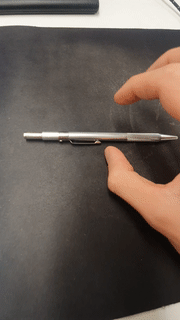
Here is a video of me playing around with the longest- and shortest lever with a pen on a table.
I always apply a straight force on the pen with my index finger, and always the same amount of force. My thumb is the pivot point.
You can clearly see that when the pivot point is in the center (= same length of levers) the pen just spins out. When I apply the force at the smallest possible lever the pen comes shooting out! And it rotates even though I just applied a straight force!? What the heck!?

Another GIF.
Imagine a small but powerful step on Jarvis left shoulder and see the rake come smashing up around his center of gravity.
Well, I can go on and on, but I guess you get the point now. If you haven't thought about this before try to study a few pros throwing and you'll see it again and again.

We've all seen this scenario a hundred times over in movies and cartoons. Looks like it would hurt quite a bit, right? That's a lot of force travelling really fast.
Here's another one for all you sadists out there:

Let's pick this scenario apart.
What's REALLY happening here?
What's starting the movement of the rakes? And why are they moving so fast when nothing else in the scene seems to be moving nearly as fast as the handles of the rakes?
The answer is quite simple - leverage to the smallest possible lever.
And the result is that the longest lever comes smashing up ROTATING around the pivot point
It's just that simple!
Now this is important:
Would you get the same force and speed on the rake by grabbing it on the far side of the handle and trying to pull it up really fast?
Answer: No, not at all.
So why are you doing this when you throw? Your throwing arm is basically the handle (although it consist of moving levers and some 90 degree angles, the concept is basically the same). Don't try to drag the handle around! Instead try to "step on the rake". One small and linear movement just behind your center of gravity and.. BAM! Feel your whole arm come smashing around -rotating- around your center of gravity. As always, keep the shoulder angle at 90 degrees and keep the forearm loose. Now you've got your self a powerful whip-rake! You can finally be the gardener that Indiana Jones always dreamt of being.
Now lets apply this to the disc golf form. We know that your center of gravity is the pivot point.
1. What's your longest lever? Spoiler: It's everything on the left side of the center of gravity when you are viewed by someone else from the back of the teepad. How do you make that lever as long as possible at the moment the disc is leaving the hand?
2. What is your shortest lever? Spoiler: It's what's on the opposite side of the center of gravity. (Every part of your body can either be the long lever or the short lever.) How do you make that lever as small and compact as possible?
3. In which direction do you need to apply force on the short lever to make the longer lever smash around the center of gravity like the rake does?

Here is a video of me playing around with the longest- and shortest lever with a pen on a table.
I always apply a straight force on the pen with my index finger, and always the same amount of force. My thumb is the pivot point.
You can clearly see that when the pivot point is in the center (= same length of levers) the pen just spins out. When I apply the force at the smallest possible lever the pen comes shooting out! And it rotates even though I just applied a straight force!? What the heck!?

Another GIF.
Imagine a small but powerful step on Jarvis left shoulder and see the rake come smashing up around his center of gravity.
Well, I can go on and on, but I guess you get the point now. If you haven't thought about this before try to study a few pros throwing and you'll see it again and again.
Last edited by a moderator:
